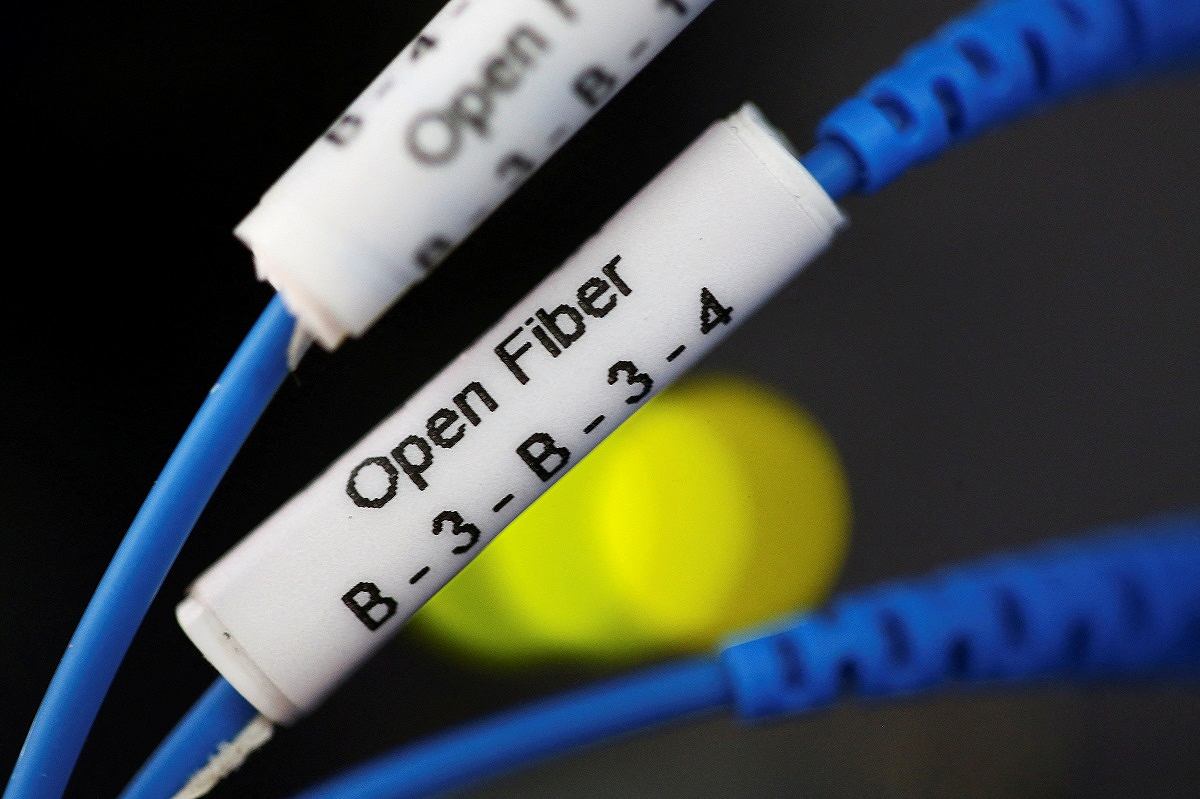Strategy for Establishing Next-Generation Communication Infrastructure Set to Be Rolled out; Japanese Companies Eye Increased Market Share

Optical fiber cables for internet providers are seen running into a server room in Italy on June 23, 2017.
13:21 JST, August 30, 2024
The communications ministry plans to compile a new strategy aimed at rolling out a next-generation communication infrastructure, a step made with an eye on the rapid surge in artificial intelligence technology usage.
The Internal Affairs and Communications Ministry is aiming for the full-scale introduction of a communication network that harnesses optical technologies in Japan by about 2030, with the Innovative Optical and Wireless Network (IOWN), a next-generation network being developed by NTT Group, in mind. The government will also push ahead with establishing systems needed for communication services that use communication satellites and unmanned vehicles.
The ministry will soon release a strategy for “realizing a next-generation information and communications infrastructure that supports an AI society.” Many observers have pointed out that the growing use of generative AI and other AI technologies requires increased electricity consumption. The ministry has decided that a high-speed, low-latency communication network that does not chew through as much power will be needed in Japanese society in the 2030s, when AI will be used in a wide range of fields.
The ministry will promote the implementation of an all-photonics network — a communications network that uses optical technologies — such as IOWN, to ensure multiple AI specialized in certain fields can work together and to enable data centers that process information to be established in locations across the nation. Use of optical technologies will enable high-speed, low-latency communications that require significantly less power.
The strategy’s schedule calls for the establishment of new technologies that allow different business operators to connect through an optical network in about 2028, and for the full-scale introduction of these services in Japan in about 2030. The strategy anticipates that multiple data centers would be connected and able to operate in an integrated manner. The ministry will also support the international standardization of this technology in a bid to expand operations overseas.
Use of high-altitude platform stations — base stations in the sky that enable communication by mobile phone — and even more satellite communications are forecast until the 2030s. Consequently, the government will draw up relevant legislation and provide support for developing related technologies.
According to the ministry, Chinese telecommunications giant Huawei Technologies Co. held 30.6% of the global market for transmission equipment that uses optical technologies in 2022. Japanese companies Fujitsu Ltd. and NEC Corp. held a total share of 7.2%, and this figure has been increasing in recent years. Under the new strategy, such manufacturers of relevant equipment also will strengthen efforts to expand business overseas in parallel with the practical adoption of optical networks.
"Science & Nature" POPULAR ARTICLE
-

‘Fiercest, Most Damaging Invasive Weed’ Spreading in Rivers, Lakes in Japan, Alligator Weed Found in Numerous Locations
-

Univ. in Japan, Tokyo-Based Startup to Develop Satellite for Disaster Prevention Measures, Bears
-

Japan Set to Participate in EU’s R&D Framework, Aims to Boost Cooperation in Tech, Energy
-

Tsunami Can Travel Vast Distances Before Striking, Warn Japanese Researchers
-

Japan’s H3 Rocket Failed in Latest Launch, Says Official
JN ACCESS RANKING
-

BOJ Gov. Ueda: Highly Likely Mechanism for Rising Wages, Prices Will Be Maintained
-

Core Inflation in Tokyo Slows in December but Stays above BOJ Target
-

Osaka-Kansai Expo’s Economic Impact Estimated at ¥3.6 Trillion, Takes Actual Visitor Numbers into Account
-

Japan Govt Adopts Measures to Curb Mega Solar Power Plant Projects Amid Environmental Concerns
-

Major Japan Firms’ Average Winter Bonus Tops ¥1 Mil.























